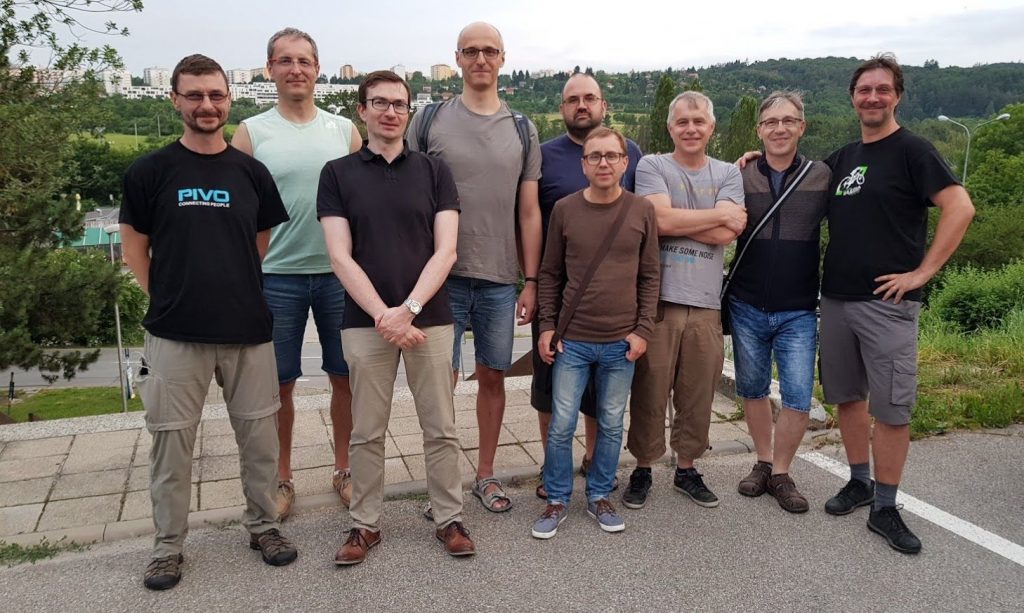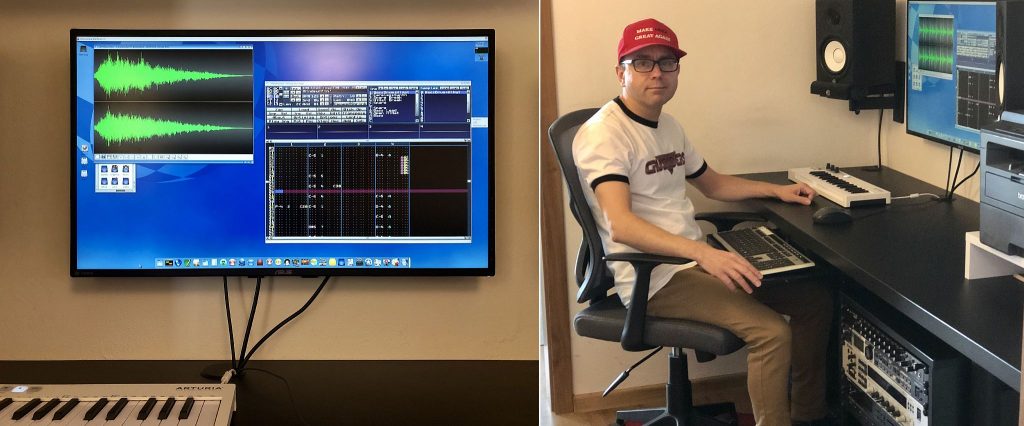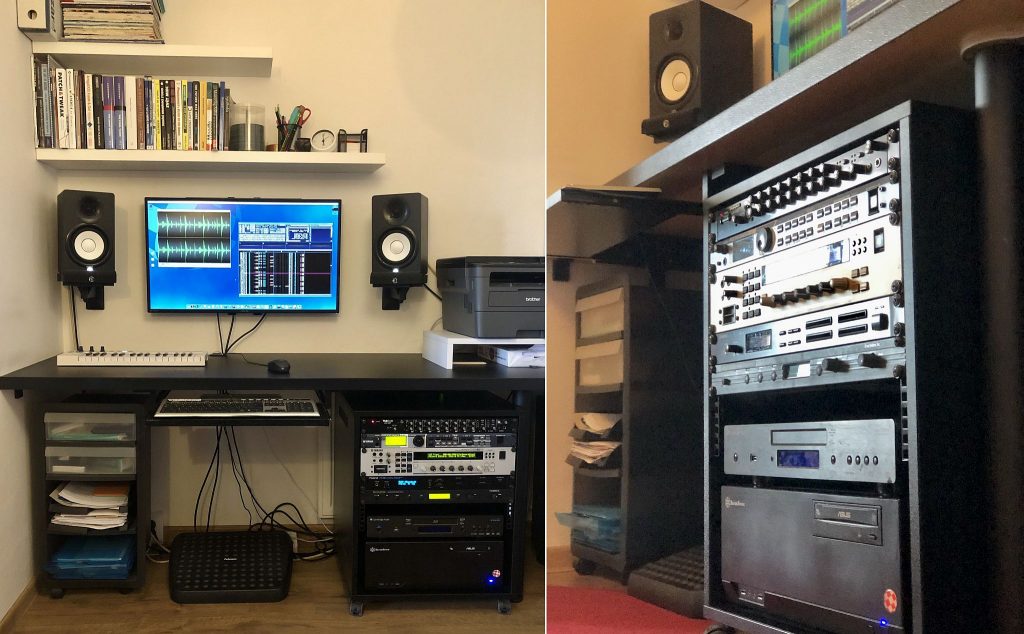Much of my creative activity in the 1990s was related to the Amiga demoscene. I was lucky to live in a city which, albeit small, concentrated enough local talent to have formed a full-fledged demo group called Vectors, which I joined in early 1993. Unlike many other demo groups, the members of which were often scattered across different cities or even countries, we could easily meet up in person to discuss things, work on our projects, or just have some serious fun with our Amigas. This gave us a strong sense of belonging, and I dare say that our creative endeavours were driven by the fact that we were pals, above all.
Last year some good soul remembered that Vectors would soon turn thirty, and we organized a get-together to celebrate the anniversary. Most of us hadn’t met for good twenty years, so I expected a brief and rather subdued social occasion attended by life-worn, pot-bellied family guys. To everyone’s surprise the event extended into the small hours, well past the time our function room was hired for. Demos ran rampant, monitors flickered, beer flowed like a river, so it was inevitable that someone would eventually stand up and say, “Yes, we can! Let’s make a new Vectors demo!”

The drunken idea would have been all buried and forgotten were it not for our trusty coder Defor (the tallest guy in the photo above), who sent us an e-mail a few months later saying “All right boys, so I’m working on the demo, remember? How about you make some graphics and music for it?” I immediately knew I was in trouble because I hadn’t composed any demo tune since 2000. So I first thought I’d just fish out some unused music I made in the 90s and be done with it. But as others picked up speed and kept showing new stuff, my cowardly decision became more and more embarrassing. I also couldn’t help noticing that my old Protracker modules sounded really horrible, considering today’s standards. So it was clear that my AmigaOne X5000, which I had mainly used for system programming and occasional gaming, would soon get a new task to prove itself.
AmigaOS4 is not short of music trackers, although the choice is naturally not as wide as on classic Amigas. After some experimenting I finally opted for MilkyTracker, which is actually a FastTracker 2 clone but can export songs in the Protracker format. Good – I had the right tool and now it was time to bite the bullet and do my piece of work. It’s not that I hadn’t composed any music in the previous two decades; in fact I ran a small production studio for a few years, but it was all PC-based and very MIDI-oriented, with the Steinberg Cubase sequencer being my staple software. So it naturally took me some time to put all my trust in the Amiga again and get back into the tracking mood. “Will I still enjoy it?”, I asked myself. “Will the final result be worth the effort? And will my wife not kill me when she sees what I’m doing?”

Right: Me at work. The “Make Amiga great again” cap is courtesy of Steven Solie.
As it turned out, neither the Amiga nor the tracker paradigm were the roadblocks. But I had completely forgotten how limited Protracker was with audio samples! Although MilkyTracker was more than happy to import material from my sample collection (most of which are 16-bit stereo .wav files sampled at 44100 Hz), when working on a tune to be eventually saved in the .mod format you want to keep an eye on the Protracker specification right from the start, to avoid unwanted surprises at a later time. I learned something of a bitter lesson there before I finally decided to play it safe and just converted everything to 8-bit mono at 22050 Hz (i.e. half the original sample rate), which seems to have worked well. Compared to the sounds I used in my old songs, none of which were sampled above 16 kHz, I can hear that this project has really benefited from the increased sample rate and got the extra spark in the higher frequency range, allowing the drum track to stand out and making synth sounds more vivid. The individual instrument parts are more defined and the overall sound is less muffled. Apparently, good old 8-bit sound can still cut the mustard.

Right: My AmigaOne X5000 tucked away at the bottom of the rack case.
Once I got the samples in it was time to brush up my tracking skills, knowledge and techniques. To my surprise, after a few late-night sessions using the tracker was like wearing old shoes. It was still there! I even remembered many of the Protracker effect and control commands, which only testifies to the fact that human memory has a tendency to keep the most useless things of all. Anyway, to cut a long story short: I had the tune pretty much complete in about two weeks of burning the midnight oil. I spent some more time optimizing the song in order to get under the size limit imposed on me, for we had agreed that the demo would be a true retro piece running on a lowly Amiga 500 (with a 512 KB Fast RAM expansion as an afterthought). During the entire process MilkyTracker was a pleasure to work with and never crashed or locked up, which suggests that the port is a job very well done. I can certainly recommend the program to any AmigaOS4 user interested in making music for demos or games.
With all the artwork and code in place we finally released the demo at a local Amiga party held in late September, a real close shave because the government’s Covid-19 restrictions hit back the following week. We decided to call the demo Mindsurfin’, which I find a particularly apt name not only because of the laid-back atmosphere but also for the reason that working on the demo was one big trip down the memory lane. And there was one more thing in it for me personally. I was excited to see our labour of love run on a classic Amiga, knowing that my next-generation Amiga was so instrumental in the project. It felt like two worlds shaking hands in a much-delayed reunion.
Enough said, enough done. You can download Mindsurfin’ as an .adf image from the demoscene portal Pouët.net (which also hosts old Vectors productions, in case you were interested in what we did in our years of youthful folly). The demo has been tested on a genuine Commodore Amiga 500, on a Vampire V4 Standalone, and in various emulation environments including Amiga Forever and E-UAE. You can also watch it on YouTube as an alternative. Last but not least, a few people have asked me if the music .mod can be downloaded from somewhere, so I’ve made it available here for anyone interested.
Enjoy and spread the word!

Pingback: “Everybody Online, Looking Good” – Amiga Ireland
Pingback: Amigas on the lake – Rear Window
Pingback: Amigas on the lake | Rear Window
Pingback: The crest of a Rave | Rear Window